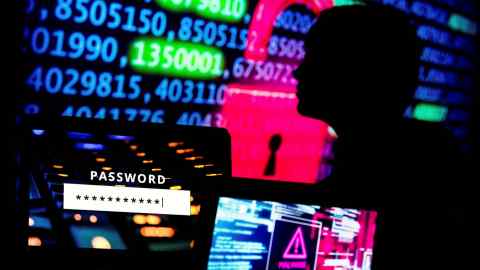If it was inconceivable two decades in the past that performing from dwelling would be the norm for a massive part of the workforce, today it looks equally really hard to countenance a comprehensive return to the office. Though Omicron may perhaps fade into the alphabet soup of Covid, hybrid functioning is here to remain.
For company schools educating the next generation of executives, the new adaptable world necessitates instructing of some topics that had been not of course necessary in 2019, such as working out how to guarantee distant colleagues are not at a downside to those people in the business.
Other classes ended up pertinent in the “before times” but have been amplified by the pandemic. Most notable between these is cyber safety, and that it is not only a endeavor for IT departments but need to be understood as a trouble for every single worker, from the main govt down.
Fraud and cons are one of the biggest threats to organizations. Ransomware may possibly make the headlines but the most widespread criminal resource stays social engineering, or self-confidence tips designed to persuade people to hand in excess of passwords or other sensitive data. These could possibly be a phishing e-mail supposedly from an IT technician, or a romance scammer requesting income for a aircraft ticket.
An era in which people today and personnel are so usually out of the place of work only can make these threats extra perilous.
“The price tag of fraud will become the value to a client and the charge to a product,” claims Dimitrie Dorgan, senior fraud threat supervisor at Onfido, an id verification organization specialising in facial biometrics. “There are really artistic means they can abuse factors which conclude up producing damage to companies.
1 trend he sees is fraudsters attempting to uncover new weak places. “Fraudulent action is not a straight line,” he emphasises — fraudsters, following all, are in search of to minimise their time and electrical power.
“After the pandemic, we have noticed assaults peak at the weekend, when [businesses] are less than a ton extra force to deliver the exact sort of products and solutions with reduce staffing,” Dorgan provides.
Between his recommendations is the want for organizations to increase the quantity of levels of stability an attacker need to penetrate, and not simply including in new passwords. “Based on the details in our report, biometric checks can play an crucial part in adding friction,” he states. “There’s just one additional layer of obtaining to existing your experience which displaces fraud.”
Including these kinds of methods haphazardly will be ineffective, however — they should be applied as a core element of the company. “Building with security in mind usually means you can assistance your buyers improved,” suggests Dorgan.
Although new permutations of outdated-fashioned fraud are the most evident on the internet menace, MBA programmes will also want to be certain that individuals are nicely versed in managing the next generation of threats. Matthew Ferraro, counsel at regulation agency Wilmer Cutler Pickering Hale and Dorr in Washington, calls this “disinformation and deepfakes risk management”, or DDRM.
Since 2016, there has been a expansion in on the web disinformation, a dilemma heightened all through the Covid pandemic, when conspiracy theories about vaccines and similar ideas these kinds of as QAnon went viral. “Disinformation is a challenge that need to not be the worry only of the IT division but also of the C-suite,” suggests Ferraro. “The hazards posed by viral bogus narratives and reasonable bogus media involve far more than complex answers.”
Deepfakes — synthetically created material employed for illicit reasons — have lengthy been feared as a political instrument for propagandists. But Ferraro notes that the Federal Bureau of Investigation in the US has been warning that attackers will “almost certainly” use deepfakes to assault businesses inside of the following 12 months.
“We have already noticed reviews of malefactors working with computer system-enabled audio impersonation programmes to trick establishments into wiring tens of thousands and thousands of pounds proper into the criminals’ fingers,” he claims. “Preparing for and responding to increasing enterprise pitfalls requirements to be the accountability of enterprise management, not just cyber-stability departments.”
Companies have a extended way to go on countering this menace, Ferraro provides. “One way to think about this concern is that disinformation and deepfakes possibility is currently wherever cyber safety was 15 decades ago,” he warns. “But the hazards are coming — and closing rapidly.”
But he is very careful to emphasise that synthetic intelligence-produced media have superior takes advantage of as well as bad. For corporations, the positives assortment from customisable AI-generated human methods avatars to pc-created faces for advertising strategies.
“Weighing the positive aspects of this type of synthetic media with the small business, reputational and even social pitfalls of generating and propagating fake personas is specifically the type of final decision leaders, not IT departments, have to have to make,” he says.
Even so, as with fraud, preserving reputations requires corporations to be quick-relocating and reactive from their leaders down, suggests Ferraro. “Today, on line conversations push manufacturer identities. Presented the speed, scale and ability of viral disinformation, its finest instant danger to enterprise is reputational damage.”






More Stories
7 Home Business Ideas For Women That Work
Business Solutions to Peoples’ Needs
eFoods Global Business Opportunity Review – Emergency Food For Long Term Storage